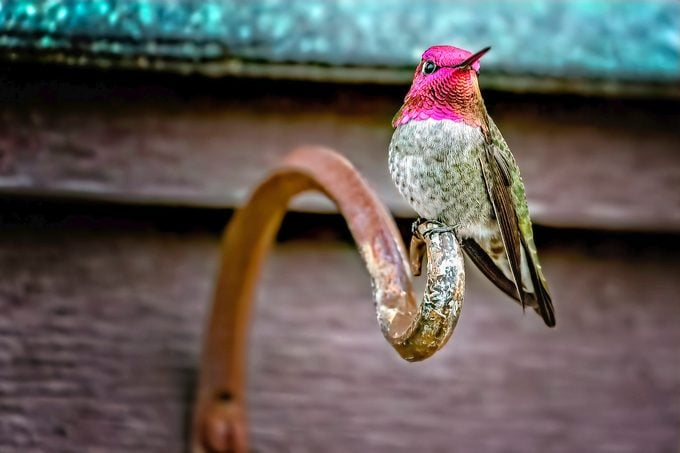14 Proven Hummingbird Photography Tips
Updated: Jan. 18, 2023
Look, listen and learn! Here's how to shoot amazing hummingbird photography that captures these birds' dazzling colors and behavior.
Hummingbird photography is amazing because hummingbirds are fascinating. There is no other creature on the planet like them, with their tremendous speed, precise aerial maneuvering, fierce determination and incredible iridescent glimmer, all on that diminutive feathered frame. They are truly a wonder of nature. Follow these tips to improve your hummingbird photography.
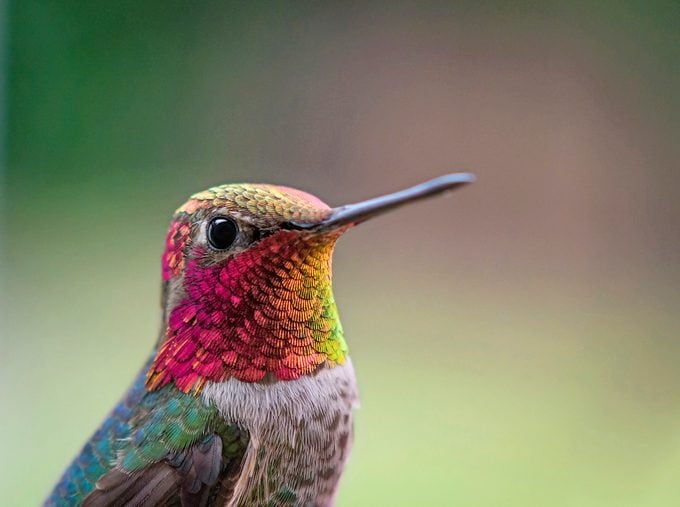
Hang Lots of Hummingbird Feeders
Elijah Gildea of Redding, California shoots professionally for Perky-Pet bird feeders and leads tours in Costa Rica, while teaching local photography workshops. He uses a Nikon D850 camera, with a Nikon 200-500 lens. In his own backyard, Elijah regularly photographs six hummingbird species. “I have 12 large hummingbird feeders up and spend my mornings drinking coffee, cleaning and refilling feeders, and watching dozens of hummingbirds.” Here’s everything you need to know about hummingbird feeders.

Know Hummingbirds’ Habits
When Bill Friggle’s severe arthritis forced him into a power chair, he felt depressed by his limitations. Reading about another photographer who had similar challenges inspired him. “On the days you can, you go out and do what you can,” he says. Bill, who lives in Denver, Pennsylvania, uses a Nikon D600 camera, with a Nikon 200-500 lens. “Know the hummingbirds,” he says. “What are their habits? That allows you to predict where they will be and lets you prefocus your camera on that spot.” Discover jaw-dropping facts about hummingbirds.
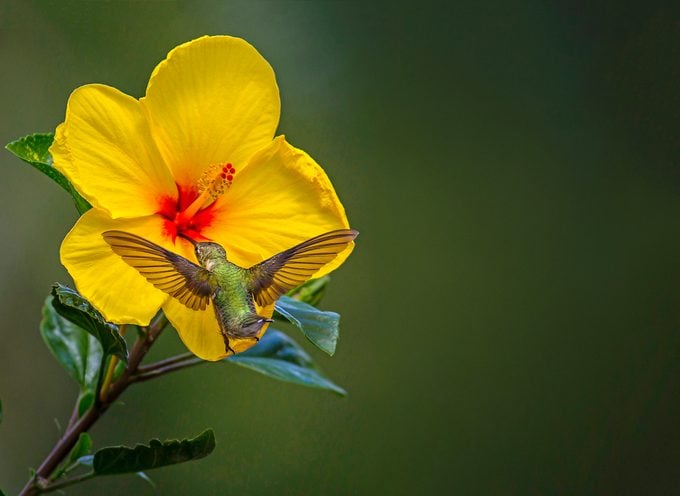
Master Your Camera
Mike Bond of Sumter, South Carolina, began dabbling in wildlife photography in 2007, focusing first on flowers to master camera settings and good composition. The challenges of partial paralysis make his photos all the more impressive. “I can’t use my left hand or leg, and I’m confined to a power wheelchair,” he says. Mike used his engineering skills to design a special wheelchair camera mount he calls the C4 Freedom, with a shutter adapter he clicks with his mouth. His camera is a Canon EOS 5D Mark III. Attract hummingbirds with 9 expert tips.
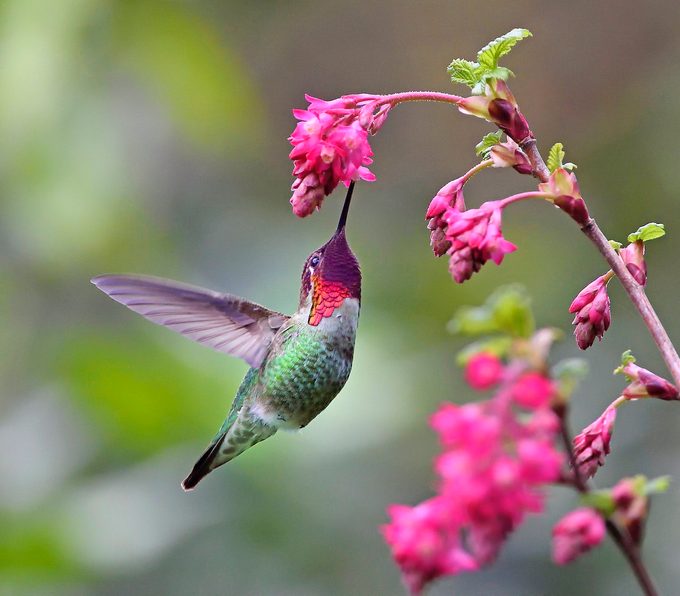
Shoot Multiple Frames
“Hummingbirds are the jewels of the animal kingdom,” says Leslie Scopes Anderson of Arcata, California. “Hummingbird photography involves beautiful flowers, which also adds to the experience.” Leslie uses a Nikon D4S camera with a NIKKOR 200-400 lens. To overcome the challenge of hummingbirds’ quick, darting flights, she waits for them to hover before clicking the shutter—repeatedly. “Shoot, shoot, shoot!” she says. “The more frames the merrier.” We found the top 15 colorful flowers hummingbirds like.
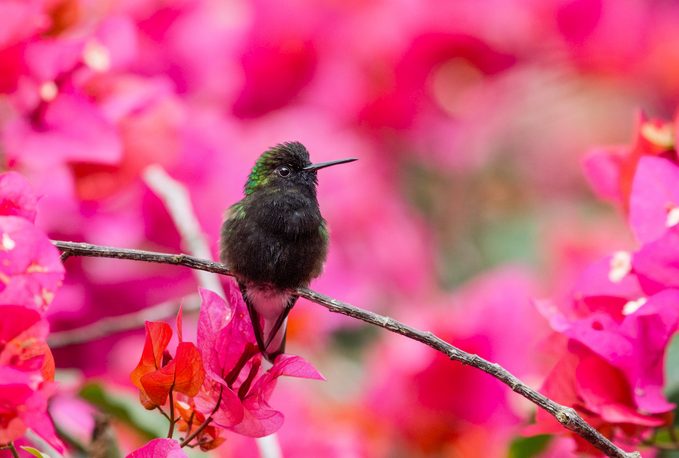
Watch for Perching Hummingbirds
“Learn the sounds hummingbirds make so it’s easier to spot them,” Elijah Gildea says. “Try shooting hummingbird photography while they’re perched and still to get sharp, colorful photos. You need to see these stunning hummingbird photos.
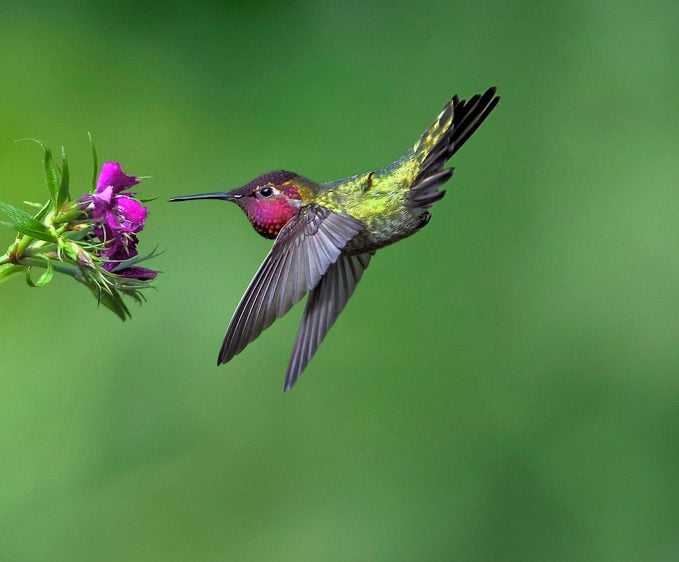
Pay Attention to the Light
“As photographers say, ‘Point your shadow at it,'” says Leslie Scopes Anderson. “Keep the sun behind you for maximum color rendition.” She also recommends trying to focus on hummingbirds’ eyes. Check out spectacular hummingbird photo contest winners!
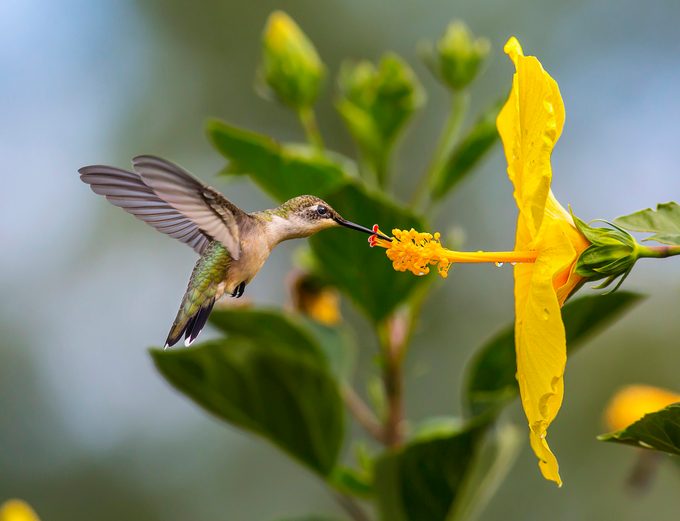
Plant Lots of Flowers
“Grow a variety of flowers in your garden to create better backgrounds,” says Mike Bond. “In the wild, position yourself to catch a hummingbird on a blossom’s edge.” Hummingbird love to visit these red flowers.
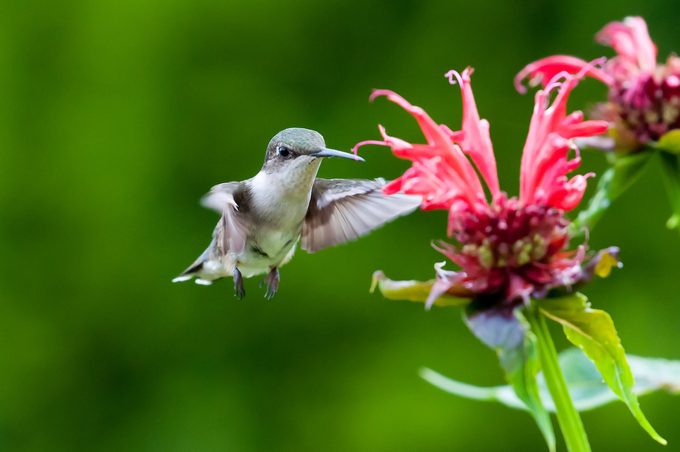
Keep Quiet
The perfect shot is worth waiting for. “Patience! Bring a chair, be quiet and wait,” says Bill Friggle. “Wear the same colors each time so you blend into the background.” Psst—here’s more even ways to attract hummingbirds.
More Hummingbird Photography Tips
Wear Red
“Hummingbirds are really drawn to the color, whether you’re wearing it yourself or if it’s on a flower. I carry a red umbrella to stay out of the sun, wear my brightest red shirt and sit in front of my zinnia garden with my camera at the ready,” says Mary Sullivan of Delano, Minnesota.
Give Hummingbirds Perches
“I put out feeders with perches on them. The birds stop long enough for me to snap a picture,” says Mary Clark of Mantachie, Mississippi.
Wait for the Right Moment
“Patience. Lots and lots of patience,” says Susan Chilkotowsky-Kain of Marlton, New Jersey. We found the best gifts for hummingbird lovers.
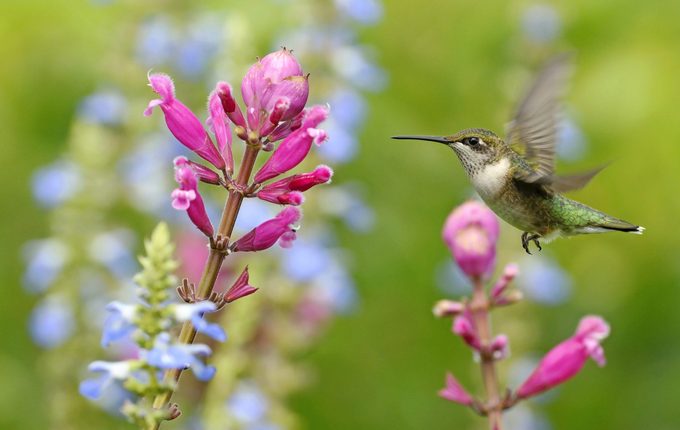
Take a Seat
“Sit and watch the hummers. They’ll get used to you being there. Then you can sit all day focusing on hummingbird photography to your heart’s content,” says Jackie Taylor of Hubert, North Carolina. Learn how to create an ideal hummingbird habitat.
Try a Tripod and Remote Control
“I set my camera up on a tripod a few feet from my feeder. I focus the shot, attach a remote control shutter, then have a seat. Rather than watching the feeder through the viewfinder the whole time, I listen for the noise made by the birds’ wings,” says Billy Walker of Fort Walton Beach, Florida. Psst—this is the only homemade hummingbird nectar recipe you need,
Use Manual Focus
Know your camera. There are a variety of cameras on the market today that will allow you to get great images of hummingbirds. But what’s most important is that you take the time to understand your equipment’s capabilities, as well as its limitations. “Open your camera’s aperture all the way and focus manually while you take dozens of hummingbird photos,” says Vincent Drexler of Canal Fulton, Ohio. Learn how to choose the best hummingbird feeder
Just Add Water
“Hummingbirds love water, especially on hot summer days. Try setting a sprinkler or mister near a perching spot. It won’t take long for them to find it and provide some outstanding entertainment! Just make sure you protect your camera from the moisture,” says Bud Hensley.





















